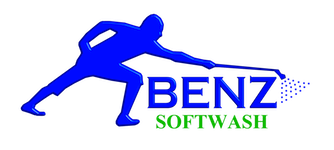
Lime render is the first coat of lime plaster applied to the external surfaces of traditionally-built stone or brick buildings. Unlike cement render it allows the building to "breathe", thus facilitating the evaporation of moisture. It is often covered by thin layer of limewash or whitewash.
You'll usually find lime render on older properties because lime was commonly used in building construction right up the the 1940s when cement-based render took over.
What's the difference between lime render and limewash?
Lime render is created by burning limestone or chalk with with coal to form quicklime (aka "lump lime"). The quicklime is then slaked with water and mixed with fine aggregates including sand, soot and ash to create lime render.
Limewash is pure slaked lime in water. Limewash and whitewash cure to become the same material.
How to soft wash lime render
Take the same care when soft washing lime render as you would when soft washing silicone render or sand & cement render.
And just to be safe – with your customer's permission – we suggest treating a small, out of the way, test patch first. Show your customer the results and get their approval and permission to continue before treating the whole property.
We've found a treatment of Benz Lighting Cleanze biocide, applied at 5-10:1 and thoroughly rinsed, followed by a post-treatment of Benz Bio Cleanze biocide (diluted 25-40:1) to be highly effective.
Quick tips:
1) Lime render is softer and more delicate than other renders, which rules out pressure washing.
2) If lime render is to be painted, or re-surfaced with limewash, thorough pre-rinsing of Lighting Cleanze is especially important.
Post-treating lime render
Limewash is a porous surface, so is suitable for offering your customer a post-treatment with Benz Bio Cleanze to impart long-term protection from re-colonisation.
And putting customers on your "Clean & Maintain" programme gives them a permanently clean property and you, the contractor, a nice source of repeat business for years to come.
We hope this information is helpful and sincerely wish you great success in your soft washing business,
Ben, Leo, Fiona, Stevie & Anthony



Leave a comment